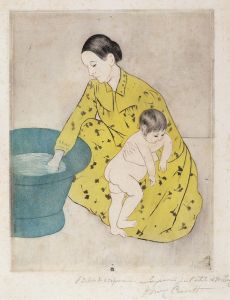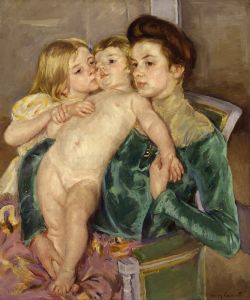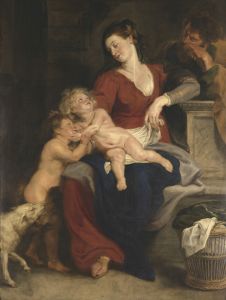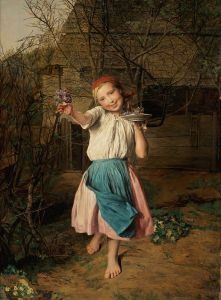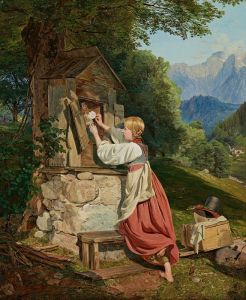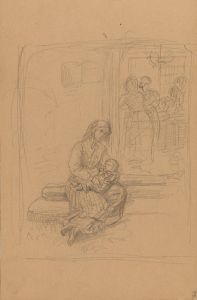
Der Notar Dr. Josef August Eltz mit seiner Gattin Caroline, geb. Schaumburg, und den acht Kindern in Ischl
A hand-painted replica of Ferdinand Georg Waldmüller’s masterpiece Der Notar Dr. Josef August Eltz mit seiner Gattin Caroline, geb. Schaumburg, und den acht Kindern in Ischl, meticulously crafted by professional artists to capture the true essence of the original. Each piece is created with museum-quality canvas and rare mineral pigments, carefully painted by experienced artists with delicate brushstrokes and rich, layered colors to perfectly recreate the texture of the original artwork. Unlike machine-printed reproductions, this hand-painted version brings the painting to life, infused with the artist’s emotions and skill in every stroke. Whether for personal collection or home decoration, it instantly elevates the artistic atmosphere of any space.
Ferdinand Georg Waldmüller, an Austrian painter renowned for his contributions to the Biedermeier period, created the painting Der Notar Dr. Josef August Eltz mit seiner Gattin Caroline, geb. Schaumburg, und den acht Kindern in Ischl in 1835. This artwork is a family portrait that depicts Dr. Josef August Eltz, a notary, alongside his wife, Caroline (née Schaumburg), and their eight children. The scene is set in Ischl, a town in Austria that was a popular destination for the bourgeoisie and aristocracy during the 19th century.
The painting exemplifies Waldmüller’s mastery in portraying domestic life and his attention to detail. It captures the family in an outdoor setting, surrounded by lush greenery, which reflects the artist’s skill in rendering natural landscapes. Each family member is depicted with individualized expressions and poses, showcasing Waldmüller’s ability to convey personality and character. The composition emphasizes familial unity and the values of the Biedermeier era, which celebrated domesticity, order, and middle-class virtues.
Waldmüller’s use of light and color in this painting is characteristic of his style. The natural light illuminates the figures and the surrounding environment, creating a harmonious and serene atmosphere. The detailed rendering of clothing and accessories further highlights the social status and individuality of the family members.
This painting is considered an important example of Waldmüller’s portraiture work, as it combines elements of realism with the idealized representation of family life. It also provides insight into the cultural and social context of the time, reflecting the aspirations and values of the Austrian middle class during the early 19th century.
The current location of the painting is not widely documented, and further details about its provenance remain limited. However, it remains a notable example of Waldmüller’s contribution to 19th-century European art.





